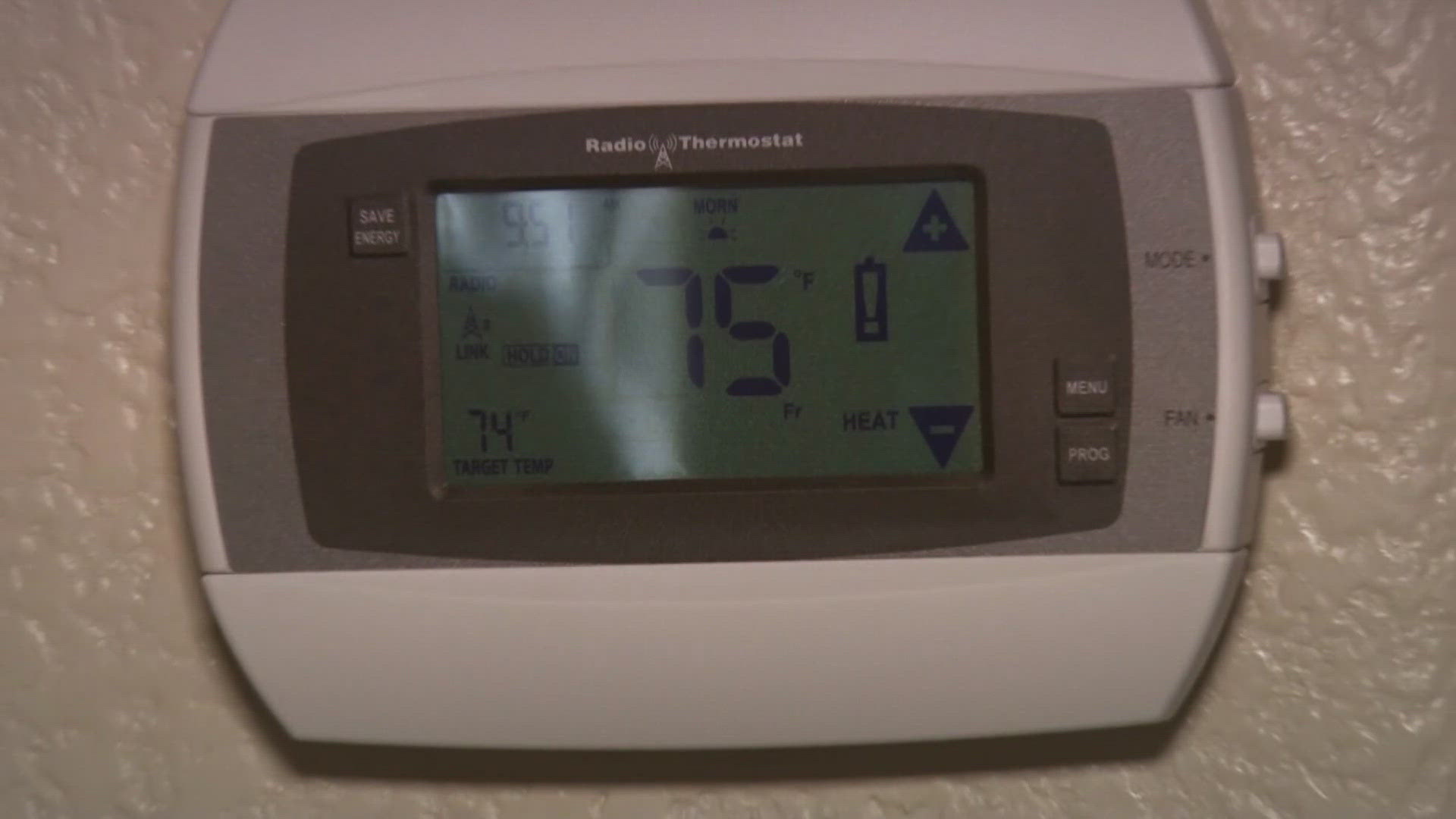PHOENIX — As temperatures rise during the summer months, so do electric bills. However, customers across the Valley are finding unique ways to get their costs down. One method is called "super cooling" and those who use it say it helps.
"Super cooling does exist," Mark Mariano said. "It can be beneficial to you if you have the right home."
VERSIÓN EN ESPAÑOL: ¿Puede el 'superenfriamiento' de su aire acondicionado reducir su recibo de la electricidad?
Mariano is the retail program manager at Champion Air. He said super cooling, or pre-cooling, isn't new and is really quite simple.
"You take your air conditioning, and you crank the temperature down to about 60-65 degrees," he said. "And you leave it at that overnight."
"And that allows you to not have to run your air conditioning during the hotter part of the day," APS Customer Technology Manager Sarah Noll said.
Noll said customers will drop the thermostat overnight or during the early morning hours when energy rates are lowest. This allows the whole house to cool down.
"You're cooling your blinds, your tile, your countertops, everything in your house," Noll said. "So that helps your house stay cooler throughout the day which allows you to not have to run your air conditioning during those peak hours."
That's because during the day, customers will bump the temperature way up. In some cases, it'll keep the air conditioner from running as much or at all during peak times when energy rates are highest.
"The thermostat setting I think is really a personal choice," Noll said. "That's going to be up to the customer. But we would say bring that down quite a few degrees earlier in the day. Keep it cooling during the day and then when you go to on-peak hours then you allow your air conditioner temperature to go up. So then it can forgo running altogether and run less and then you'll avoid using energy during those on-peak hours."
Does it really, though, help customers save money?
"Yeah absolutely," Noll said. "It can save you money on your electric bill. Another great thing about pre-cooling is it typically occurs the same time of day when our solar panels are producing energy. And so by optimizing and utilizing this method you can use energy when we have an abundance of solar energy and it's really optimizing."
"People do it to save energy and it does save people money," said Mariano. "However, it applies to certain peoples' homes. If your home isn't energy efficient, if it's not insulated enough or your windows and doors aren't sealed correctly it won't work the way it should. If your home is tight like an envelope and secure it can work really well."
How much specifically it could save someone varies. Noll though adds it's important for customers to do a bit of research and reach out to their energy provider to ask them about how to get the best result.
"I want to make sure customers understand what rate they're on and which one makes the most sense to them," she said. "Time of Use and Time of Use with Demand rates work really well with Super Cooling."
However, not everyone is on board with super cooling.
SRP spokesperson Casaundra Donahoe said while adjusting the thermostat can save money, they recommend keeping the thermostat around 78 degrees during peak hours and maybe around 75 degrees when energy rates are lower.
"When you turn your temperature way down or way up, let's say 10 degrees, whether it's down during off-peak or up during peak hours you're really asking your AC unit to work that much harder to get to adjust," Donahoe said.
Therefore, the AC is going to be on for a much longer period of time and using more energy, Donahoe added, especially during times when you're going to want to be more comfortable.
"We recommend you turn your thermostat down 3-4 degrees and then during the peak hours turn it back up 3-4 degrees so that you have that comfortability at home, but you're also saving money during those peak hours. And then once those peak hours are over go ahead and turn it back down again," Donahoe said.
Mariano though said this method doesn't have a negative impact on one's AC system.
"That's what they're meant to do, they're meant to increase and decrease," he said.
Officials agree super cooling may not be for everyone and there probably will be some trial and error if someone decides to try it. So if interested, be sure to reach out to your electric company and ask for more information.
If you're an SRP customer you can go here.
If you're an APS customer you can go here.

